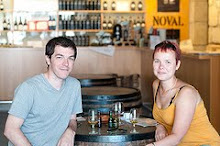From Helsinki we started on one of the most interesting, exciting and unique legs of our journey – Russia , Mongolia and China Gobi Desert , the train followed one of the classic historical routes from Europe to Asia .
After answering some fun questions on the immigration forms, including: Have you ever worked for a nuclear weapons facility? Have you ever been charged with espionage? Are you trained in explosive materials? (seriously who would answer yes to any of these?), we arrived inSt. Petersburg Russia St. Petersburg




After answering some fun questions on the immigration forms, including: Have you ever worked for a nuclear weapons facility? Have you ever been charged with espionage? Are you trained in explosive materials? (seriously who would answer yes to any of these?), we arrived in
The next day we headed off to Peterhof, the
On Thursday we were off with public transport to Katarine’s Palace in Pushkin (the palace of Katherine the Great). After waiting in line for an hour we entered the palace and were bombarded with the opulence of the late Tzars. Opulence is the key word; because, while the rooms were stuffed with gold brocade furniture and gold paneling, door frames, light fixtures, etc., it struck us as severely monotone without much thought for creating a comfortable and real residence that was reflective of Russian culture (compared to say the Scottish castles, the Alhambra or the palaces of Rajasthan India). Although the Amber Room that had just recently been reconstructed, was amazing. However, such ridiculous and pointless extravagance must have helped bring about the Tzars’ fall, just like Versailles helped propel that fate in France






That night we went out with our host, two other guests from Lithuania
Our last day was spent enjoying the city with a grand walking tour of St. Petersburg Russian Museum are unknown and / or has hardly ever been exhibited outside of Russia


![]()
![]()
![]()
![]()
![]()
After a quick coffee break, we continued on our sore feet back across the river and through the city parks running north from the Hermitage along the river. After our epic seven hour walk we had a quick dinner, followed by packing before catching our midnight train fromSt. Petersburg to Moscow Moscow – Red Square , Kremlin and more.
After a quick coffee break, we continued on our sore feet back across the river and through the city parks running north from the Hermitage along the river. After our epic seven hour walk we had a quick dinner, followed by packing before catching our midnight train from
Tip: Check out the rest of our photos on Flickr, as there are a lot of good ones from Russia
 Logging you in...
Logging you in...
